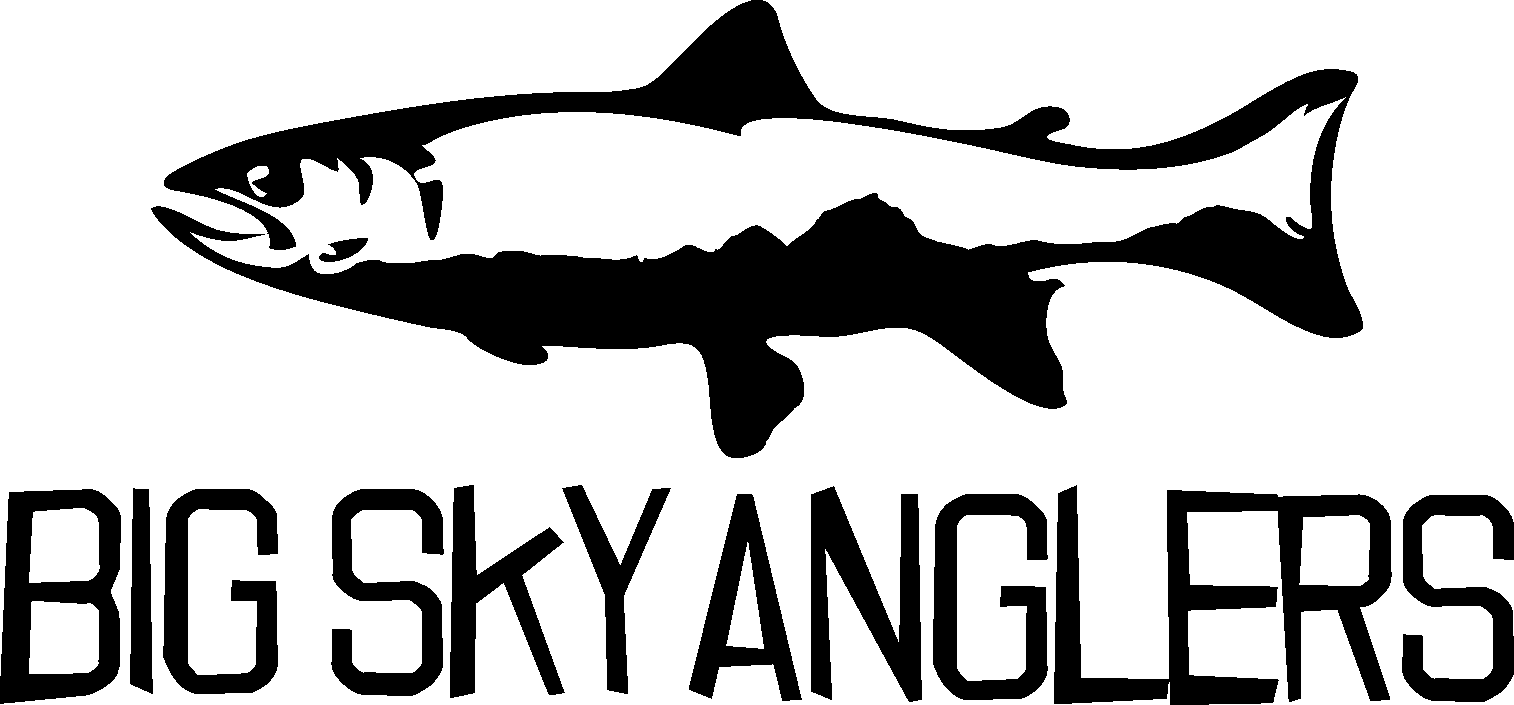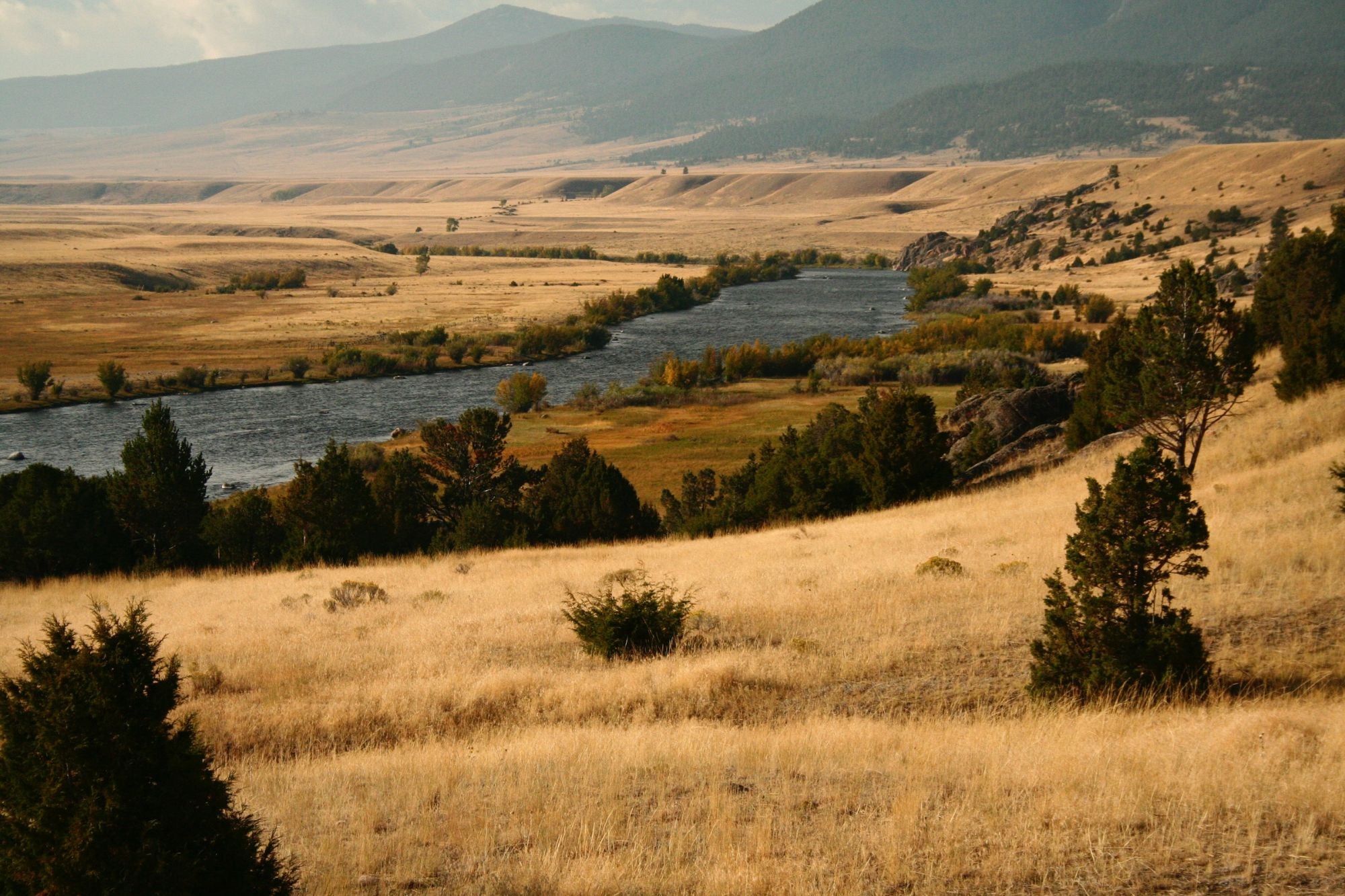montana and yellowstone national park
Perhaps the most prominent fishing destination in the area, the Madison River is also one of the most diverse fisheries in the western US, with multiple sections split based on geography and topography. The Madison is born in Yellowstone Park at the confluence of the Firehole and Gibbon Rivers. From there, the Madison winds its way downstream through one of the prettiest valleys on earth before exiting the Park near West Yellowstone. Shortly downstream of the Park boundary, the river is consumed by Hebgen Lake, a large reservoir. A short section of river known locally as “Between the Lakes” flows from Hebgen Dam to the mouth of Earthquake Lake, formed by a massive landslide that dammed the river after a large earthquake shocked the region in August of 1959.
When the Madison eventually spills out of Earthquake Lake and tumbles down “The Slide”, it has taken on the legendary “freestone tailwater” characteristic that has helped make it a world famous trout river. Farther down the valley, below the town of Ennis, the river is consumed by Ennis Lake, another reservoir. Downstream of Ennis Dam, the river flows through the Beartrap Canyon before emerging into the broad valley and lower reaches on its way to join the Gallatin and Jefferson Rivers near the town of Three Forks.
The Madison in Yellowstone Park and down into Hebgen Lake is a slow and meandering river with “chalkstream” character for most of its length, divided by classic riffles, runs, and pools in a few areas. It provides great angling opportunity throughout the season, but is most noted for its early season hatches and late season migratory runs. There are plenty of summertime opportunities here as well, but one must be on the lookout for a solid food source which could counter the lethargic effects of warm summertime temperatures. This section is formed from the combined flows of the Firehole and Gibbon Rivers, which are both fed by hot geyser basins, so summertime temps can be too warm, and fishing can be dangerous on the trout. This thermal activity is also what creates opportunity when the weather is a little too cold elsewhere. Optimum water temperatures can be found here when they don’t exist elsewhere. So, during that cold snap of a snowstorm in August, or when there is ice and high water elsewhere, this section is something to keep in mind. In the fall, large brown trout move up from Hebgen Lake on their spawning run, and equally large rainbows follow. Both become the target for many anglers, providing excellent angling opportunity starting in September and getting better through October until the Park fishing season closes in early November.
An outstanding fishery exists through the canyon Between the Lakes. The scenery is absolutely incredible, with towering rock cliffs and wooded hillsides providing a backdrop for consistent fishing for brown and rainbow trout, and mountain whitefish. This section is only a couple of miles long but its trout population is constantly recharged by trout moving in and out of Earthquake Lake. Keeping fish and fishing with bait are both allowed in this section, resulting in a sometimes eclectic mix within the angling crowd here, but the richness of this fishery shouldn’t be overlooked. Also, don’t miss out on the killer breakfasts served at the Campfire Lodge café, right on the banks of the river.
When people speak of the Madison, this is likely the section they are dreaming of. The valley here is breathtaking, and classically Montana. The wide openness of the river valley is bordered by the high glaciated peaks of the Madison Range to the east and the lower, rolling Gravelly Mountains to the west. This stretch of river is often described as being a giant riffle, but it is so much more than that. Pocket water, seams, slicks, runs, buckets and more all hold trout. There is so much water to explore and fish. In a way, it fishes more like a small mountain freestone stream than a giant tailwater when you break it down. And the dry fly fishing is typically fantastic, even when a hatch isn’t bringing fish to the surface. It has an abundance of trout and insect life, making for a world-class fishery.
Mid-June through October is usually a very consistent time to fish this section of the Madison. We focus most of our effort here due to its consistency. It can be advantageous to fish the river from both a boat as well as on foot depending on the time of year and section of river. The Madison sees one of the largest hatches of Hydrosyche and Glossoma Caddis in the area. Good caddis fishing can start in early July and last through Mid-August. Productive days in early and late season are much more weather dependent but can be very rewarding. We fish this stretch of the Madison more than any other river in the area due to the different type’s water available to fish as well as the excellent average fish size.
From the Ennis Dam to Three Forks, the river offers angling opportunity throughout the season, but is at its peak in the spring and fall as the water is a bit warmer down here and there is quite a bit of tubing traffic along the easily accessed reaches from nearby Bozeman. The upper portion of this section is the Beartrap Canyon. Flowing through the Lee Metcalf Wilderness Area, this is the most rugged and remote section of the Madison, with with class 3 and Floating this section is an experts only proposition.
Below Beartrap Canyon, there is excellent river access for floating and wading anglers along the highway. When the river again departs the highway in its lowest reaches it becomes more remote again and not fished as often. This remoteness and the interesting valley geography and braided nature of the channel gives a unique feel to the river. Though overall fish numbers are lower than in the upper Madison, some large browns are taken down here.







